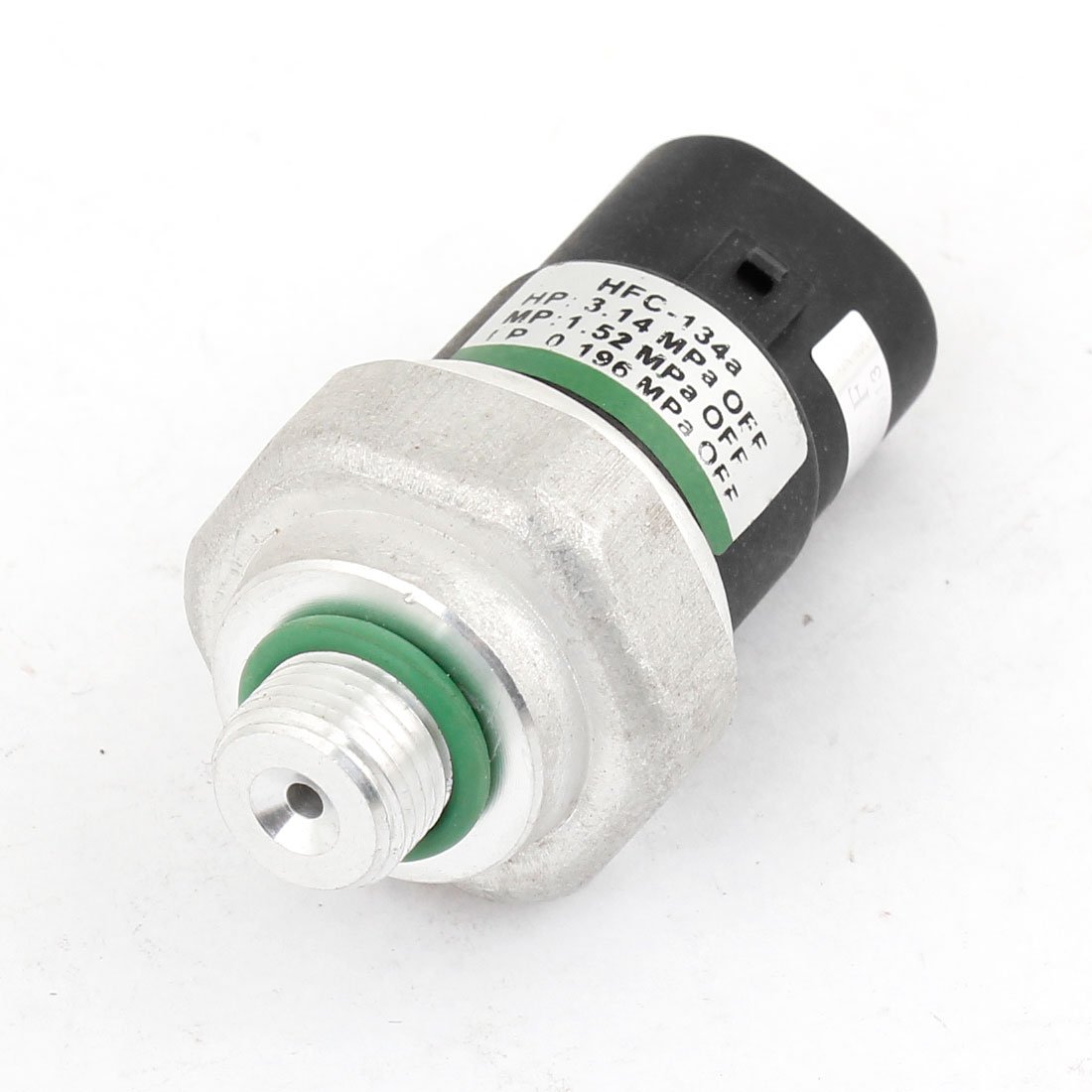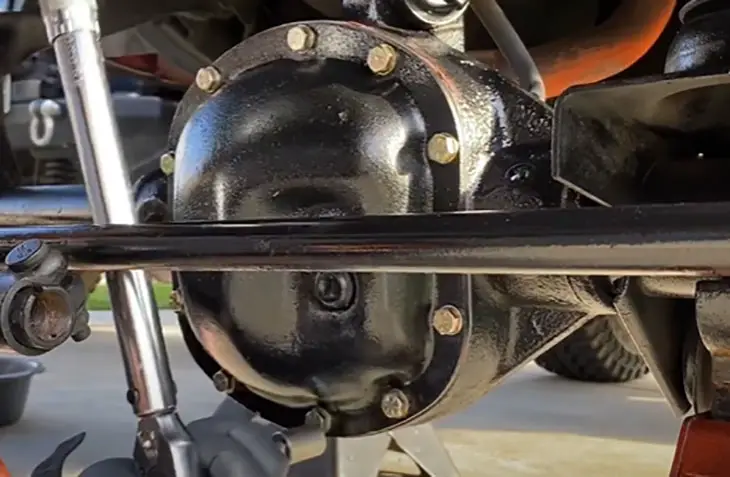Regarding your car’s air conditioning system, the AC pressure switch is crucial in maintaining its functionality. This small but essential component helps regulate the pressure within the AC system, ensuring optimal cooling performance. This comprehensive guide will take you through everything you need to know about the AC pressure switch, from its functions and location to diagnosing and addressing potential issues.
What Does an AC Pressure Switch Do?

First, let’s dive into the fundamental question: What does an AC pressure switch do? The AC pressure switch, also known as the AC pressure sensor, is a vital safety and control device in your vehicle’s air conditioning system. It monitors the pressure levels of the refrigerant within the AC system, ensuring that they remain within safe operating limits.
Moreover, the AC pressure switch safeguards against potential damage to the compressor and other components. If the pressure exceeds the recommended range, the switch can trigger the compressor to engage or disengage, preventing costly AC system failures.
Also Read: Radiator Pressure Tester: Your Car’s Well-Being!
Where is the AC Pressure Switch Located?

Before delving into diagnostics and bypass methods, knowing where to find the AC pressure switch in your vehicle is essential. Typically, the AC pressure switch is located on or near the AC compressor or the AC receiver-drier. To pinpoint its location, consult your vehicle’s service manual or use online resources for your make and model.
AC Pressure Switch Functions and Symptoms of Failure

Understanding the functions and recognizing the symptoms of a bad AC pressure switch is crucial for maintaining your AC system’s performance.
AC Pressure Switch Functions
Pressure Monitoring
The primary role of the AC pressure switch is to monitor refrigerant pressure levels within the system.
Compressor Engagement
It controls when the AC compressor engages and disengages, ensuring it operates efficiently and prevents damage.
Symptoms of Failure
Inadequate Cooling
If your AC system fails to cool the cabin, a malfunctioning pressure switch might be the culprit.
Constant Cycling
Frequent cycling of the AC compressor, where it turns on and off rapidly, can signify a problem with the pressure switch.
No Cooling at All
A lack of cold air from the vents can result from a failed pressure switch.
Compressor Damage
Ignoring a malfunctioning switch can damage the compressor, resulting in costly repairs.
Regular maintenance and prompt attention to these symptoms can help you avoid expensive AC system repairs and ensure your vehicle’s comfort in hot weather. If you suspect an issue with your AC pressure switch, it’s advisable to consult a professional technician to diagnose and address the problem before it worsens.
How to Test the AC Pressure Switch

Testing the AC Pressure Switch is a crucial step in diagnosing potential issues and ensuring the proper functioning of your air conditioning system. Here’s a step-by-step guide to performing this test:
- Safety First
Prioritize safety by turning off the vehicle and ensuring the AC system is depressurized to prevent accidents.
- Locate the Switch
Find the AC pressure switch in your vehicle by referring to your service manual for its precise location.
- Disconnect the Electrical Connector
Carefully unplug the electrical connector from the AC pressure switch, ensuring you handle it with care.
Multimeter Setup: Set your multimeter to measure resistance, often indicated as ohms. This setting allows you to assess the electrical continuity of the switch.
- Measure Resistance
With your multimeter configured correctly, connect its leads to the terminals of the AC pressure switch.
- Check the Resistance
A properly functioning AC pressure switch should display a specific level of resistance. Consult your vehicle’s service manual to determine the exact resistance value it should read.
- Compare Readings
Compare the resistance reading you obtained with the specified value from the service manual. If the readings do not match, it indicates a potential fault in the AC pressure switch, necessitating replacement.
How to Bypass the AC Pressure Switch
In some cases, temporarily bypassing the AC pressure switch can help you diagnose other AC system issues or provide emergency cooling. Here’s how to do it safely:
I. Safety Precautions
Ensure the AC system is depressurized and the vehicle is off.
II. Locate the Switch
Find the AC pressure switch and identify the wires leading to it.
III. Jump the Wires
Connect a jumper wire to the two wires going to the switch. This essentially bypasses the switch.
IV. Turn On the AC
Start your vehicle and turn on the AC. If the compressor engages and cold air starts blowing, this indicates that the switch might be the problem.
Remember that bypassing the AC pressure switch is temporary and should not be used as a long-term fix. If your AC works after bypassing the switch, it’s essential to replace the faulty switch to maintain the safety and efficiency of your AC system.
Important: CV Joints: Symptoms, Replacement Costs, & Maintenance Tips
How to Replace the AC Pressure Switch
If you’ve determined that your AC pressure switch is faulty, replacing it is the next step. Here’s a general guide on how to do it:
- Safety First
Turn off the vehicle and ensure the AC system is depressurized.
- Locate the Switch
Find the AC pressure switch and the electrical connector.
- Disconnect the Connector
Carefully unplug the electrical connector from the switch.
- Remove the Old Switch
Depending on your vehicle, you may need a wrench or socket to remove the old switch from its mounting location.
- Install the New Switch
Screw in the new AC pressure switch and tighten it securely.
- Reconnect the Connector
Plug the electrical connector back into the new switch.
- Pressurize the System
Recharge the AC system with refrigerant according to the manufacturer’s specifications.
How to Jump a 4-Wire AC Pressure Switch
In some vehicles, you may encounter a 4-wire AC pressure switch. The process to jump this type of switch is similar to the 3-wire switch. Locate the switch, identify the correct wires, and use a jumper wire to connect them. Follow safety precautions and consult your vehicle’s service manual for specific instructions.
How Do I Know if My AC Pressure Switch is Bad?
Pay attention to the signs mentioned earlier to determine whether your AC pressure switch is bad, such as inconsistent cooling and warning lights. As described earlier, testing the switch with a multimeter can provide a definitive answer.
What Happens When the AC Pressure Switch is Bad?
When the AC pressure switch fails, it can lead to various issues, including reduced cooling efficiency, compressor problems, and potential damage to other AC components. Timely diagnosis and replacement are essential to prevent further damage.
Conclusion
The AC pressure switch is a critical component of your vehicle’s air conditioning system. Understanding its functions, location, and how to diagnose and address issues related to it can help you keep your AC system running smoothly. Whether you need to test, bypass, or replace the AC pressure switch, following the steps outlined in this guide will enable you to make informed decisions and maintain the comfort of your vehicle’s cabin during scorching summer days. Remember to prioritize safety and consult your vehicle’s service manual for specific instructions tailored to your make and model.




